Farewell tribute to Michiko Okaya
Michiko, since you joined Lafayette’s Art Department on Sept. 1, 1979, you have been a driving force in enhancing the arts at the College, sustaining the interdisciplinary nature of the Lafayette experience and fostering our connection with members of our neighboring communities. Your colleagues have emphasized that your strides have made the Lafayette College Art Collection and the College Art Galleries the great successes that they are today. Your transformative service to Lafayette was celebrated in 2010 as you were presented Lafayette’s Distinguished Service Award, which recognizes sustained, distinguished performance by our staff members.
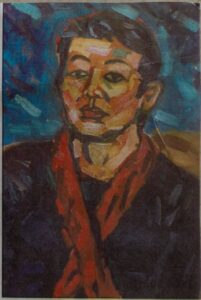 At the start of your tenure at Lafayette, the College’s art collection, even the highly valued Kirby Art Collection, which has national significance, had very minimal professional oversight, and a gallery program did not exist. You launched your career by beginning your perpetually dedicated professional care of the College’s art collection, which followed the guidelines of the American Museum Association. We are so grateful for your protection and conservation of Lafayette’s artwork. Your efforts established an aspirational methodology that will ensure that the Lafayette collection will be forever safe.
At the start of your tenure at Lafayette, the College’s art collection, even the highly valued Kirby Art Collection, which has national significance, had very minimal professional oversight, and a gallery program did not exist. You launched your career by beginning your perpetually dedicated professional care of the College’s art collection, which followed the guidelines of the American Museum Association. We are so grateful for your protection and conservation of Lafayette’s artwork. Your efforts established an aspirational methodology that will ensure that the Lafayette collection will be forever safe.
Through your insights and determination, Lafayette launched our endeavors to create art gallery experiences. Under your creative and able direction and through your discerning and innovative efforts, the arts have become an essential and inspiring feature of the Lafayette experience for all the members of the Lafayette College community and for the residents of the Lehigh Valley. The hallmark of your enhancement of the Lafayette education has been your careful and sensitive coordination with College programming. The gallery committee, which you formed, consists of interested faculty, staff, and students. Each exhibition proposal that your committee considered was weighed in terms of its relevance to College programming. In the countless exhibitions that you mounted and curated, your exceptional qualities—which include your astute vision, dedication, imagination, energy, elegance, and wit—were also on display.
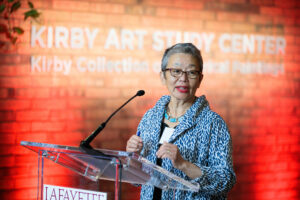 As he reflected on the exhibitions that you created, Bob Mattison, Marshall R. Metzgar Professor of Art, said, “I had the pleasure of working with Michiko on 28 exhibitions over nearly 40 years, and my colleagues in the department and around the campus have had similar experiences. Within the department, we referred to working on exhibitions with Michiko as wish fulfillment. We would propose an exhibition, and Michiko would amazingly make the complicated loan requests, shipping arrangements, art-handling decisions, and installation designs to make that exhibition a reality.”
As he reflected on the exhibitions that you created, Bob Mattison, Marshall R. Metzgar Professor of Art, said, “I had the pleasure of working with Michiko on 28 exhibitions over nearly 40 years, and my colleagues in the department and around the campus have had similar experiences. Within the department, we referred to working on exhibitions with Michiko as wish fulfillment. We would propose an exhibition, and Michiko would amazingly make the complicated loan requests, shipping arrangements, art-handling decisions, and installation designs to make that exhibition a reality.”
Diane Ahl, Arthur J. ’55 and Barbara S. Rothkopf Professor Emerita of Art History, echoed these accolades of your outstanding efforts. “As curator of the Williams Center Gallery, Michiko always was a consummate professional. She responded to faculty and student requests in selecting exhibitions, really listening to our suggestions,” she said. “I had the pleasure of working with her directly on the occasions that I curated exhibitions of Italian medieval and Renaissance art borrowed from the Allentown Art Museum. She personally painted the walls, helped choose the correct sequence and height of works, expertly placed labels, and printed the long brochure that I wrote as a guide. The works were sensitively illuminated to highlight their colors and tactile qualities. I have curated exhibitions at museums in the United States and abroad, but never have I had the pleasure of collaborating with a professional of such intelligence, sensitivity, integrity, and kindness. She respected and helped realize my vision as a curator, and for this, I will always be grateful. She has displayed textiles, ceramics, sculpture, installations, prints, photography, and paintings. Her exhibitions have educated, enlightened, entertained, and provoked the thought of visitors. Her installations are themselves works of art, perfectly sequenced, paced, placed, and illuminated.”
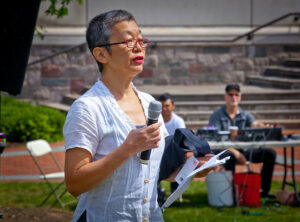 From the launch of your Lafayette career, you proposed improvements in the storage of our art collection. Soon after the start of your Lafayette career, you oversaw the small reception room in Van Wickle Hall that had been temporarily designated as the College’s first gallery. Then the William Center for the Arts was constructed, and the College had its first proper gallery. As it was built, you oversaw the design of that space so that it adhered to the criteria of the American Museum Association and began an ambitious gallery program that included up to seven exhibitions per year.
From the launch of your Lafayette career, you proposed improvements in the storage of our art collection. Soon after the start of your Lafayette career, you oversaw the small reception room in Van Wickle Hall that had been temporarily designated as the College’s first gallery. Then the William Center for the Arts was constructed, and the College had its first proper gallery. As it was built, you oversaw the design of that space so that it adhered to the criteria of the American Museum Association and began an ambitious gallery program that included up to seven exhibitions per year.
In 2001, the Williams Visual Arts Building was completed. In 2008, you began to direct the programming for two galleries. Like New York City, Lafayette now has an uptown and downtown gallery scene. One aspect of the Williams Visual Arts Building is its proximity to the City of Easton and the fact that it made the College’s historic visual art collection more accessible than ever before to students, faculty, and visitors. In addition to bringing internationally known artists to the campus, you became deeply involved in the Easton and regional art scene. You completed the IRS application process for the Arts Community of Easton (ACE) to receive charitable organization status, served as treasurer from 2001-03, served as a board member through 2004, and wrote four successful grants to the Pennsylvania Council on the Arts. The Williams Center Gallery has hosted monthly ACE meetings from early in the formation of the group, and several times each year gallery artists are featured speakers. Under your direction, the Lafayette galleries became important venues during the summer and January terms for regional artists.
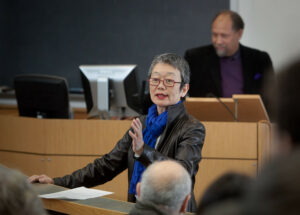 We find it symbolic of the extraordinary impact that you have had on the Lafayette experience that we dedicated the Kirby Art Study Center during the month in which we celebrated the 40th anniversary of the launch of your Lafayette career. During the dedication ceremony, we had the opportunity to highlight the myriad ways in which you have advanced the arts at Lafayette and guided the construction of this facility that makes the arts more accessible. Your guidance of the architectural team resulted in the thoughtful design of this center, which includes safer and more spacious storage for Lafayette’s artwork. The center features the type of open storage now used by forward-thinking museums. The works are fully visible to the public behind a secure glass wall, and the center is connected to a study room to which works can be easily brought for short-term exhibitions and for close hands-on examination by students and faculty. The presence of this center will be a catalyst for future donations of artworks to the College.
We find it symbolic of the extraordinary impact that you have had on the Lafayette experience that we dedicated the Kirby Art Study Center during the month in which we celebrated the 40th anniversary of the launch of your Lafayette career. During the dedication ceremony, we had the opportunity to highlight the myriad ways in which you have advanced the arts at Lafayette and guided the construction of this facility that makes the arts more accessible. Your guidance of the architectural team resulted in the thoughtful design of this center, which includes safer and more spacious storage for Lafayette’s artwork. The center features the type of open storage now used by forward-thinking museums. The works are fully visible to the public behind a secure glass wall, and the center is connected to a study room to which works can be easily brought for short-term exhibitions and for close hands-on examination by students and faculty. The presence of this center will be a catalyst for future donations of artworks to the College.
In their reflections on your impact on the Lafayette experience, Robert Mattison, Marshall R. Metzgar Professor; Ed Kerns, head of the Art Department and Eugene H. Clapp II ’36 Professor of Art; Ida Sinkevic, Arthur J. ’55 and Barbara S. Rothkopf Professor of Art History; and Ingrid Furniss, associate professor of art and acting head of Asian studies; expressed their sincere gratitude that you have preserved and protected the College’s art collection, and they wrote, “The Kirby Art Study Center is a fine culmination to Michiko Okaya’s superb career, one that has brought the visual arts alive for all the Lafayette community.”
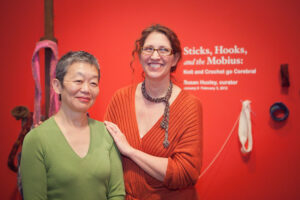 Diane Windham Shaw, director emerita of special collections and College archives, celebrated your efforts as she said, “I would like to commend Michiko for her care and stewardship of Lafayette’s remarkable art collection and on the realization of her dream for a proper home for these holdings—the Kirby Art Study Center. Congratulations to Michiko on securing this legacy for Lafayette and for advancing the cause of the visual arts for the College’s future.”
Diane Windham Shaw, director emerita of special collections and College archives, celebrated your efforts as she said, “I would like to commend Michiko for her care and stewardship of Lafayette’s remarkable art collection and on the realization of her dream for a proper home for these holdings—the Kirby Art Study Center. Congratulations to Michiko on securing this legacy for Lafayette and for advancing the cause of the visual arts for the College’s future.”
Michiko, please know that you will be missed by the Lafayette College community. We are grateful for your service to the College and the foundation that you have been for Lafayette’s inspirational arts program. We hope you enjoy a wonderful retirement.